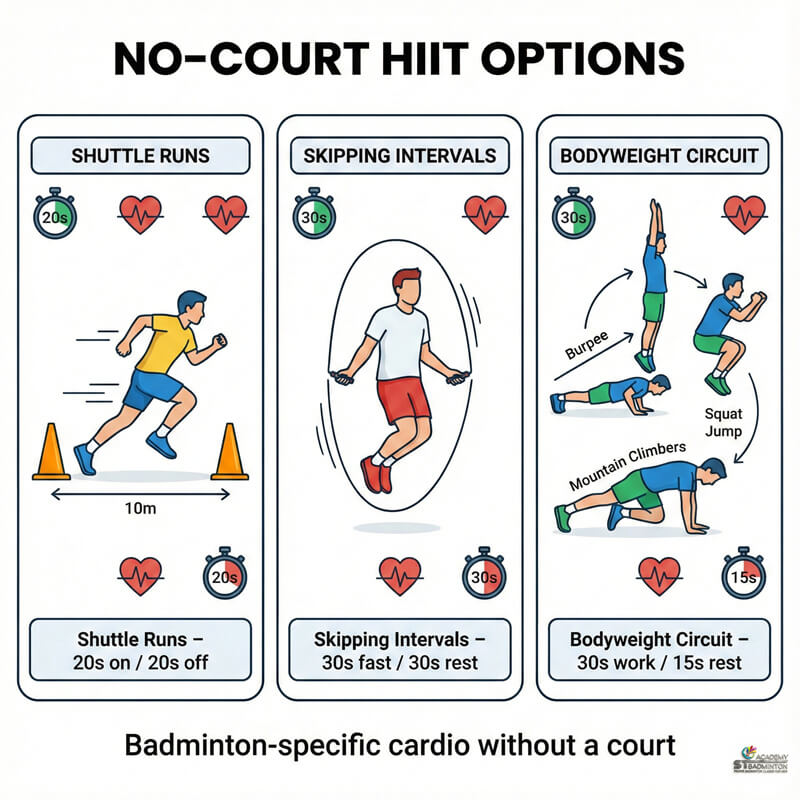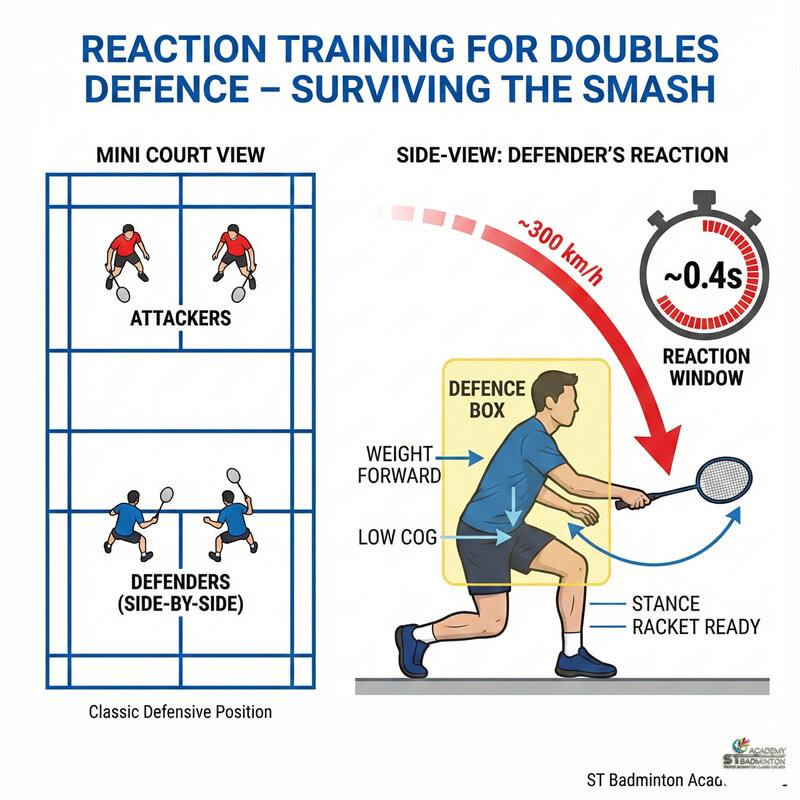Welcome to ST Badminton Academy’s badminton training in Malaysia! I’m here to tell you about an amazing combination that can help your muscles recover quickly after a tough workout or game.
It’s the perfect mix of two techniques – badminton and foam rolling – which will have you back on the court in no time.
I’ve been playing badminton for years, so trust me when I say that muscle recovery is essential if you’re going to stay in peak condition.
Foam rolling has become my go-to method for helping my body relax and repair itself, but it works even better when paired with some light badminton play.
So let me show you how these two methods work together to get your body feeling its best!
Benefits Of Foam Rolling
Have you ever felt like your body was so tense that it just wouldn’t let go?
Foam rolling is the perfect way to release those tight muscles and trigger points, allowing for much-needed muscle recovery.
As a badminton and foam rolling expert I can tell you firsthand how important this technique is for athletes of all levels.
Foam rolling helps reduce soreness, increase mobility, improve range of motion and even help prevent injury by relieving tension in the soft tissues found throughout our bodies.
The repetitive pressure applied on our muscles while using a foam roller has been known to break up adhesions caused by scar tissue build-up which ultimately leads to improved posture and better performance during workouts or games.
By releasing built-up knots in these areas, we are able to decrease pain and inflammation resulting from overuse or strain due to physical activity.
So if you’re looking for an effective way to recover after a hard workout or game, adding foam rolling into your routine could be the answer!
Badminton Exercises For Muscle Recovery
When it comes to badminton exercises for muscle recovery, the most important thing is to make sure you’re using the correct technique.
First and foremost, you’ll need to select the right gear for your body type, size, and playing level. Other than choosing a good racket and also remember to choose the best badminton resting in Malaysia. Getting a racket that’s too heavy or not suited for your style may cause injuries in the long run. Additionally, you’ll want comfortable shoes with good support and grip to help prevent any slips during movement on the court.
Once you’ve sorted all the necessary gear, it’s time to start working on those muscles! Badminton can be used as an effective way of recovering soreness after a workout by doing light drills at a slower pace such as volleying or shadowing.
You should focus on emphasizing proper form while hitting shots instead of trying to hit them harder than usual; this will help reduce strain on weak muscles and keep fatigue levels low.
With these tips in mind, you’ll soon be back feeling like new again. And now – let’s talk about how we can optimize our foam rolling routine…
Tips For Optimizing Your Foam Rolling Routine
Are you looking to take your badminton game and muscle recovery to the next level? Look no further than combining badminton exercises with foam rolling! Doing so is like a match made in heaven, almost as if it was written in the stars.
As an expert in both badminton and foam rolling techniques, I’m here to guide you on how to optimize your routine for maximum benefit.
Stretching techniques are incredibly important when recovering from any type of physical activity or exercise. They help loosen tight muscles, reduce discomfort, and can even prevent injuries. Foam rolling is an excellent way to stretch out sore muscles after playing a few rounds of badminton.
Not only does it increase flexibility, but also reduces muscle soreness by improving blood circulation throughout the body – something that’s essential for anyone serious about their game! Additionally, make sure that you’re taking breaks between games; this will give your body time to rest and recover while preventing over-exertion.
Combining these two methods together brings forth amazing results – not just physically but mentally too. So don’t forget to incorporate foam rolling into your post-badminton regimen today! You’ll thank yourself tomorrow when you wake up feeling refreshed and energized instead of stiff and sore.
Combining Badminton And Foam Rolling
Combining badminton and foam rolling can help you improve your muscle recovery while also helping to prevent future injuries. It’s a great way to get the most out of your workout, whether it’s for competition or just for fun! Here are some tips on how to combine these two techniques:
- Perform speed drills before starting any foam rolling exercises. This helps warm up the muscles and prepare them for upcoming movements.
- Incorporate core strength exercises into both badminton and foam rolling workouts. Core strength is essential in maintaining good posture during gameplay as well as providing stability during stretching routines.
- Spend time focusing on specific areas that require extra attention such as shoulders, lower back, hips and neck with targeted foam rolling sessions after each game of badminton.
- Utilize dynamic stretches between rounds of play to help activate key muscles used in the sport which will help reduce fatigue over long periods of gaming.
By combining badminton with foam rolling techniques, players can benefit from improved performance and increased durability throughout their athletic career. With proper technique and regular practice, this combination can provide an overall more enjoyable experience while playing badminton at all levels.
To maximize the benefits of this combined activity routine, make sure to stretch after your workout so that you’re able to feel refreshed and ready for your next match!
Stretching After Your Workout
After a workout involving badminton and foam rolling, it’s important to stretch.
Stretching helps release tension built up in the muscles during your session, as well as helping to prevent soreness afterward.
I recommend stretching for at least 10 minutes after every badminton or foam rolling session — taking breaks between each set of stretches if necessary.
When it comes to rest intervals, you want to make sure that you give yourself enough time for recovery in between sets so that your body can regain its energy levels before moving on to the next activity.
To maximize the benefits of stretching, focus on deep breathing while gently pushing past any discomfort that arises along the way.
This will help ensure you’re getting an effective stretch without putting too much strain on your muscles or joints.
It’s also important to be aware of how long each exercise should last; typically 30-60 seconds per movement is sufficient but by listening to your body and responding accordingly, you’ll get the most out of your post-workout routine.
So don’t forget: take some time to properly stretch after every badminton or foam rolling session! Your body will thank you later.
Frequently Asked Questions

What Type Of Foam Roller Is Best For Muscle Recovery?
When it comes to foam rolling for muscle recovery, selecting the right roller is key.
Durability is one of the most important factors when choosing a foam roller; you will want something that can withstand multiple uses and last long-term.
It’s also important to select a roller with enough density so that your muscles get the targeted relief they need—too soft or too firm won’t be effective.
Luckily there are many options available depending on your goals and level of comfort.
The best way to figure out which type of foam roller is best for you is by trying them out!
How Often Should I Foam Roll?
Foam rolling is a great way to give your muscles some TLC after a rigorous badminton session!
Pre-rolling before stretching can help loosen up tight areas while post-stretching foam rolling helps reduce muscle soreness.
As an expert in both badminton and foam rolling techniques, I recommend that you roll at least once per day – or every other day if you’re really busy – in order to keep those hard working muscles healthy and happy.
So don’t forget to include this essential step into your daily routine for optimum results!
What Are The Long-Term Effects Of Foam Rolling?
Foam rolling is an essential tool for muscle recovery, but what are its long-term effects? It’s a question that every badminton and foam-rolling aficionado should ask.
Kinesiology experts say it can lead to lasting changes in the body – from an increased range of motion to improved muscular adaptation.
Foam rolling works by releasing tension in muscles and breaking up adhesions around joints, allowing you to move more fluidly with less pain. This means greater freedom of movement when playing badminton – plus fewer sore muscles afterward!
All this adds up to better performance both on and off the court, so regular foam rolling sessions are definitely worth the effort.
What Other Activities Can Be Used In Combination With Badminton To Improve Muscle Recovery?
If you’re looking to improve your muscle recovery after a badminton session, then there are plenty of activities that can be used in combination.
Along with foam rolling, yoga practice, and hydration habits are also great for helping muscles recover quickly.
As an expert on badminton and foam rolling techniques, I highly recommend incorporating other activities into your routines such as stretching or lightweight training to maximize the benefits of muscle recovery.
By doing this, you’ll be able to keep playing at your peak level while keeping injury-free!
What Are The Best Stretches To Do After A Badminton Workout?
Stretching is one of the best ways to recover after a tough badminton session. It helps reduce muscle fatigue, improve flexibility and range of motion, as well as prevent injury.
To get the most out of your stretching routine, focus on dynamic stretches like arm circles, leg swings, and torso twists. You can also pair these with static stretches like standing quadriceps stretch, figure fours, and half-cobras for more targeted relief in specific areas.
Make sure to hold each stretch for at least 30 seconds or until you feel some tension release before moving on to the next one. Doing this regularly will not only help you stay limber but also keep your muscles healthy so that you can continue playing badminton without any issues!
Take Care of Muscles in Badminton Training is Important in Malaysia
After a long badminton match, it is important to give your muscles some love and care in order for them to be able to perform at their best.
Foam rolling can help reduce soreness and increase flexibility while providing an effective muscle recovery technique.
Additionally, incorporating other activities such as stretching into your post-game routine will further improve the recovery process by increasing blood flow and releasing tension in tight areas.
As with any sport or exercise activity, listening to your body is key – use foam rolling and badminton wisely to keep playing without injury!





